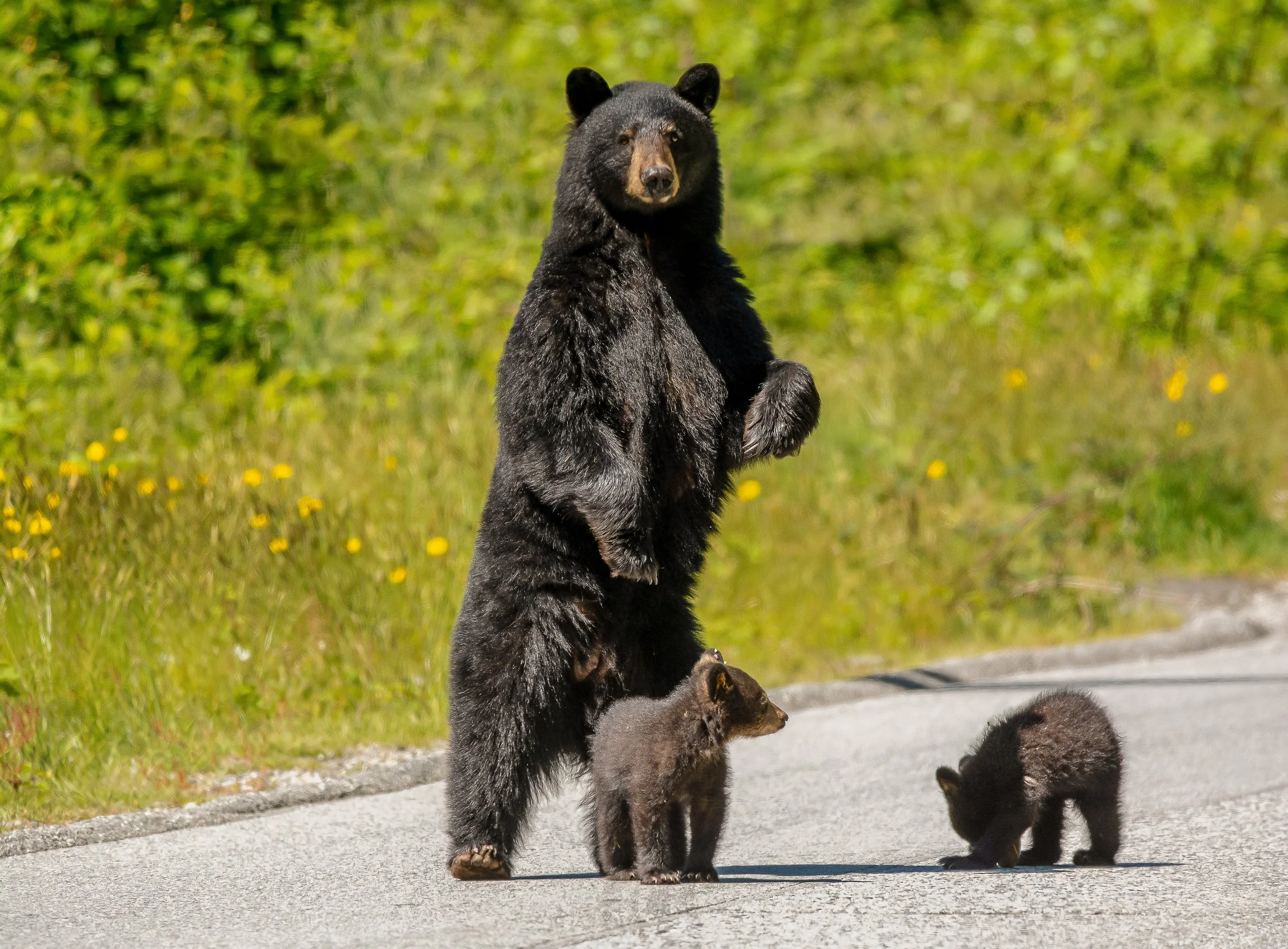MYTHS & MISCONCEPTIONS
Myth # 1 - Bears are unpredictable
“A problem for bears is not so much what we don’t know,
it’s what we think we know that isn’t true.”
Bears use body language and vocalizations to show their intentions.
Black bears may do any or all of the following when trying to warn you to back away:
Clack their teeth.
Purse their lips.
Make a huffing sound.
Make a low moaning sound (black bears do not growl).
Slap or paw the ground or a nearby object.
Bluff charge a few steps then come to a halt.
Young black bear clacking teeth and making warning huffing sound:
Myth #2 - Bear Bells are the best way to avoid an unwanted encounter
Bear bells are too quiet, especially around water features or if it is windy, and they don’t identify you as being human. It’s best to call out loudly, “YO, BEAR,” or sing and talk loudly with hiking companions.
Myth # 3 - The most potentially dangerous encounter is to get between a mum and her cubs
Female bears will behave defensively when cubs are present. If a threat is sensed Mum will ‘tree’ her cubs. Cubs are able to climb trees very soon after emerging from their winter dens in the spring. Mum may either stay on the ground and circle the base of the tree, or she may also go up the tree with her cubs. You may hear Mum making some moaning noises that indicate she is feeling stressed. Please give them space by backing away and returning the way you came.
Myth# 4 - A bear standing on his or her hind legs is about to charge
A bear standing on his or her hind legs is trying to get a better vantage point from which to assess their surroundings and any possible threat.
Photo Credit: Martin Davis



